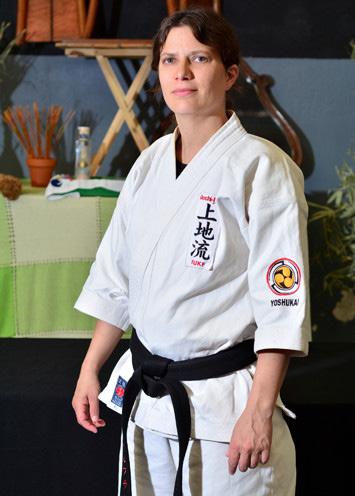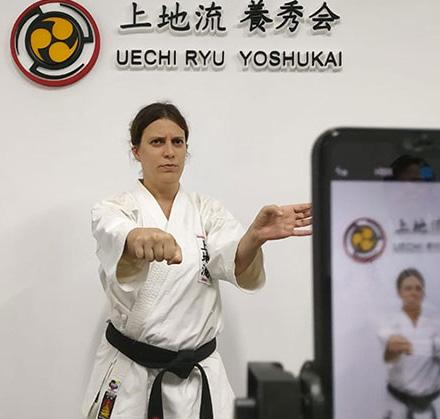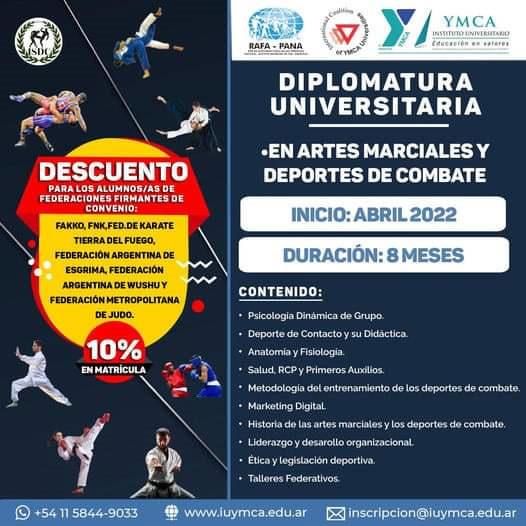
6 minute read
MARKETING TIPS FOR MARTIAL ARTISTS SENSEI Cecilia Salbuchi
Digital Marketing Tips for Martial Artists
Sensei Cecilia Salbuchi
Advertisement
We martial artists are so immersed in our world that we completely forget that the neophyte has no idea of the differences between Karate and Taekwondo, between Jiujitsu and Judo, or between Kung fu and Taichi. People outside the AA.MM. He doesn't know about federations, lineages, traditions, more than what he gets to see in a movie that they like and that is fashionable. Now that the Karate Kid has been resurrected thanks to the Kobra Kai series, all fans know that Karate comes from Okinawa, Japan, but until recently this was a mystery to them! We can easily identify the origin of each AAMM, specialty, whether it is sports, martial or therapeutic. And we even know the instructors in our region and surely we know who enjoys more or less prestige, who is a specialist in children, who in competitions, who is more traditional or, on the contrary, who is more updated in their teaching method. And since we have that knowledge, it is our responsibility to provide it to the community to properly guide them in what we do. We cannot pretend that those who do not have experience in this path can decide wisely about the place where they will be trained if we do not offer them information! We must do teaching with the public. And in this case, we teach from Marketing. It is of the utmost importance that the academies that intend to prosper in this digitized era learn certain basic notions of Digital Marketing. In an academy of considerable size, you can always hire an expert that we will find by recommendation, but smaller educational centers will have to invest time and effort in training themselves to fully exploit all the free tools that we have available on the Internet. First of all, we need to indicate exactly where we are and how to contact us, this includes mentioning the full address (city, province or state and country), WhatsApp contact and networks. Most people need to exchange a few words before approaching our place, and we must offer them the possibility of seeing our material on the networks. First indispensable tool: Google My Business. Totally free, it supports applications that have millions of users around the world such as Google Maps, it operates as a social network where notifications and multimedia content can be shared, and it also allows people to give their opinions about your place and leave you queries. Secondly, it is a good idea to show people what we do, something that works as test content so that the candidate is convinced that our
activity is something that he can do. This is where we use social media (Facebook, Instagram, YouTube, Tiktok) to showcase our class, ourselves and some of our students. Great challenges appear for some more reserved instructors, since we need to learn to make friends with the camera and show excerpts from some class, or directly generate video content for this purpose. Images accompanied by some descriptive text work, but they are already having less and less impact. The best thing is to learn to identify the profile of students that we want to attract to use the corresponding social network. Facebook and Instagram are the most popular networks among adults (35 years and older), but if we want to target teenagers we need to master Tiktok, YouTube and know Snapchat. YouTube is widely consulted by all ages, although it is popular among the youngest (children) who spend hours browsing content marked as generated especially for them. And there are many more social networks, like Twitch, Twitter, etc… And how can we address them all? It's simple, one by one. The recommended thing is that they begin to make friends with the one they use every day: eg. Facebook. They create a Facebook page for their academy, they generate content, share it, respond to comments. When that is under control, they add Instagram (both networks can be linked). Over time they replicate the videos on YouTube. They are slowly generating a community (people who follow them on the networks) and interacting with them, letting us get to know ourselves and our work. Recommendation: Basic Concepts of Digital Marketing, from Google. One of the most complete courses on the subject on the internet... and totally free! If we are lucky, we will be able to find the help of an advanced student from our academy, who will not only help us control one or more social networks, but will also willingly give us ideas to generate content. The same content is usually adapted for all social networks, which reduces the work considerably. This work must be regular and constant. It does not need to be daily, but periodic. Upload content three times a week it can give an excellent result if done neatly and tidily. For example, on Mondays we can upload 5 photos of our class accompanied by a text that indicates what happens in the images (little text), on Wednesdays we upload a flyer with our schedules and an invitation to train with us, and every Friday we share a video that can be ours or from a reference teacher of our activity and we accompany it with a short text. Finally, there is a third recommendation to provide a digital image of our academy: develop a website. Many teachers and leaders believe that it is onerous, but the reality is that today we have many options of various values ranging from free to whatever one wants to invest. The website is the most reliable and robust business card that we can have, since it allows us to capture all our data, upload all our videos and photo galleries, articles, virtual classes, product stores, etc. Among the free options the most popular are Wix.com, Wordpress. com and Jimdo.com. All three have very modern free templates to choose from and intuitive builders to create a very beautiful website without knowing any code. In principle we can generate a site with an address of the type myacademia.wix.com (subdomain), but if we wish we can invest a modest sum and the company will allow us to have a domain of the type myacademia. com.

Social networks appear and disappear, they are oriented to a certain age or to a type of content. But institutional websites remain unchanged by changes in fashion and admit all kinds of content. One last piece of advice: spend time researching your online competition (networks, website), and then do the same with a distant reference. For example, you can look for inspiration to make a good website by looking for a Karate academy in the United States, and check their networks to see how they handle them. This can help you get a firmer idea of what you want your own digital identity to look like. We hope this note has been useful to you. If you want to know more about Digital Marketing we are offering the subject within the Diploma in AA.MM. and Combat Sports of IUYMCA, more information: https://iuymca.edu.ar/index.php/ diplomatura-en-artes-marciales-ydeportes-de-combate/













